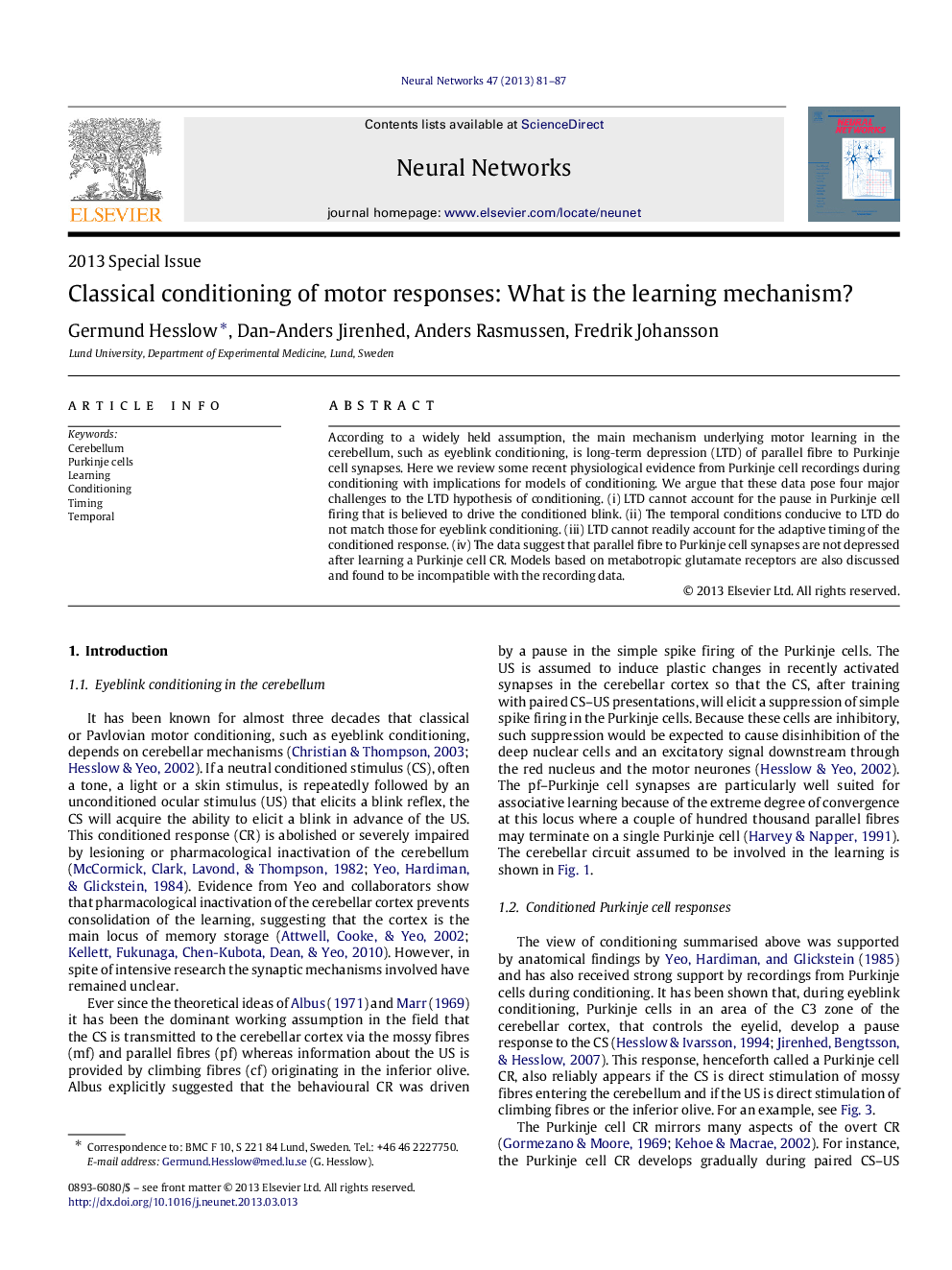| Article ID | Journal | Published Year | Pages | File Type |
|---|---|---|---|---|
| 6863376 | Neural Networks | 2013 | 7 Pages |
Abstract
According to a widely held assumption, the main mechanism underlying motor learning in the cerebellum, such as eyeblink conditioning, is long-term depression (LTD) of parallel fibre to Purkinje cell synapses. Here we review some recent physiological evidence from Purkinje cell recordings during conditioning with implications for models of conditioning. We argue that these data pose four major challenges to the LTD hypothesis of conditioning. (i) LTD cannot account for the pause in Purkinje cell firing that is believed to drive the conditioned blink. (ii) The temporal conditions conducive to LTD do not match those for eyeblink conditioning. (iii) LTD cannot readily account for the adaptive timing of the conditioned response. (iv) The data suggest that parallel fibre to Purkinje cell synapses are not depressed after learning a Purkinje cell CR. Models based on metabotropic glutamate receptors are also discussed and found to be incompatible with the recording data.
Related Topics
Physical Sciences and Engineering
Computer Science
Artificial Intelligence
Authors
Germund Hesslow, Dan-Anders Jirenhed, Anders Rasmussen, Fredrik Johansson,
